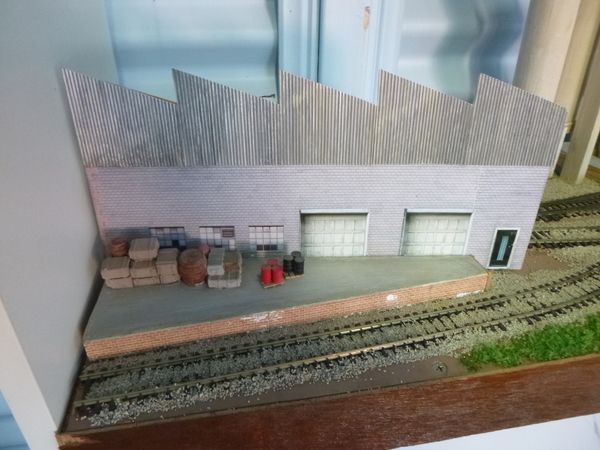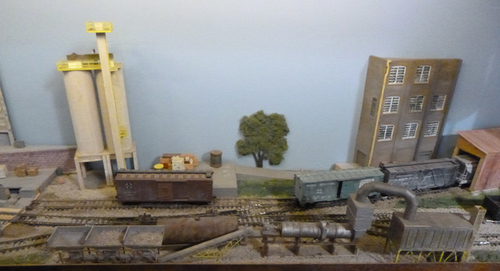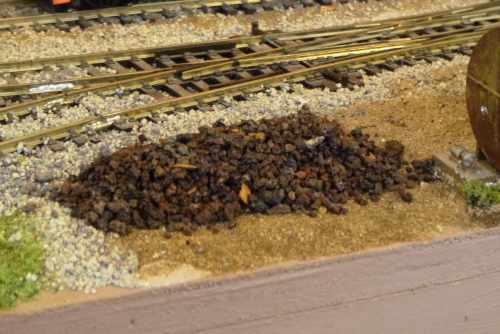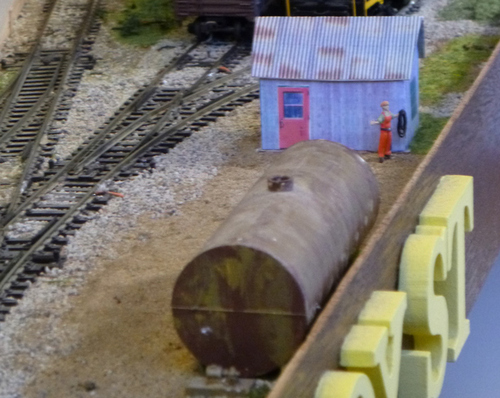Micro HO scale switching layout in a bookshelf, based on the Boxer Shortline plan on the late Carl Arendt’s small and micro model railroad website.
Micro Layouts for Ease of Moving
This HO scale micro layout was one of 3 proposed to be built to replace the Dolton / Illinook / Blue Island / Barr layout. With the possibility of an impending move some time 2020, I decided that it would be best to minimise the layout moving stress and dismantle the previous modules in favour of some smaller and easier to move modules.
The Box Street micro was a 1200mm x 300mm switching layout based on the Boxer Shortline that can be found on the late Carl Arendt’s small and micro layouts website. But I did add some extra trackage, and industry switching possibilities due to the extra width of the layout compared with that in the original Boxer Shortline plan. The layout underwent a number of track arrangement changes, each of them being a change towards a more minimal track arrangement more in line with the original Boxer Shortline plan. Below is the track arrangement in it’s final form.

Layout Description
The sector plate could hold 1 short switcher and a 40 foot car, or a longer loco and no car. There was a run around track for getting to the other side of car to switch some of the tracks, a 2 track ‘yard’ where trains ‘arrive’ from, a team tracks, a flour and grain industry spur, a food manufacturer, and amulit-industry spur (actually the sector plate). This layout progressed quite quickly to an operating state, and when I finally decided to do the scenery, the scenery was fairly quickly added as well. This layout, along with the Pier 39 micro layout, was added to a custom built bookshelf so that the two 1200mm x 300mm layouts only take up a little more than 1200mm x 300mm in floor space as they are housed in the bookshelf one on top of the other.


There was originally various elements from a hot-mix asphalt plant kit placed at the front of the layout. Over the course of the life of the layout this was eventually minimised by removing most of the plant elements and replacing them with a tank (part of the original kit), a small industrial office building, a heap of aggregate and a front-end loader to suggest a larger hot-mix asphalt industry ‘off-layout’.



In it’s final form, the layout had 1 double slip and 2 turnouts and could handle about 7 cars an operating session, with some cars already in industry spurs and some in the interchange tracks. It was built to be operated as part of the Virtual Interchange operations group I am a member of, which tends to have 1 or 2 cars per waybill and the spurs on the layout can hold about 2 cars each.
How It Was Operated
The start of an operating sessions would see some cars in industry tracks awaiting moving, and a loco and some cars (placed there by hand) in the interchange tracks. The loco crew had to work out how to best perform the moves in the minimum time and with the minimum amount of moves. This usually means that an operating session is akin to playing chess, each move having to be thought out sometimes well in advance, especially when the number of cars was at the layout’s limit.
When I originally envisioned operations on this layout I thought that I could have up to 50 scale feet cars without any problems. After operating this layout for a while, and experiencing some ‘unsolvable’ switching requirements when using a few 50 foot cars, I decided to limit the use of cars longer than 40 scale feet long as much as possible.
Locale
The layout represented a small switching area near the B&OCT Barr yard in Riverdale, a suburb of Chicago, Illinois. It’s motive power was either a B&O S4, or a CM / MPAC switcher from CM / MPAC Blue Island. CM = Colorado Midland, and MPAC = Midland Pacific, 2 model railroads operated by another member of the Virtual Interchanging group I am a member of.
To view Blog posts related to this layout, go to the Box Street Micro category.